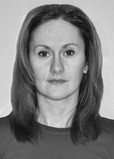Infrared thermography application to rate emotional states in sports
Фотографии:
ˑ:
PhD I.S. Kozhevnikova1
PhD, Associate Professor M.N. Pankov1
PhD, Associate Professor L.F. Startseva2
1Northern (Arctic) Federal University named after M.V. Lomonosov, Arkhangelsk
2State Institute of Drugs and Good Practices, Moscow
Sports activity can be considered as an extreme load for the body that uses not only physical, but also mental and emotional reserves of an athlete.
Modern sports with their extreme stressors are highly demanding for the individual physical fitness and mental and emotional controls and resources, with the high accomplishments secured only when the individual physical and mental resources are fully mobilized.
Many study reports have showed the sport performance being dependent on the mental and emotional control of the athletes; and this is the reason why the mental and emotional control tests (subjective and instrumental ones) are given a high priority nowadays, with the modern digital infrared thermography technology is ranked among the most promising ones.
Sampled for the study were the 19-26 year old (n=21) athletes with the 3+ year sport records. They were tested by the infrared thermography in the positive and negative emotional states, with the test data being subject to statistical analysis using halftone adjacency matrices.
The tests rated the following individual parameters: average color intensity; standard deviation; average brightness; kurtosis and asymmetry ratios; energy and entropy; and the contrast and homogeneity.
Statistical analysis of the test data was used to produce nose-area images characteristic of the positive and negative individual emotional states in the sample.
Keywords: athletes, infrared thermography, mental and emotional control.
References
- Vasanov A.Yu., Marchenko O.P., Sevostyanova M.S. Podbor kulturno-spetsifichnykh emotsionalno okrashennykh fotoizobrazheniy dlya eksperimentalnykh issledovaniy [Selection of culturally-specific emotionally colored photographs for experimental studies]. Eksperimentalnaya psikhologiya. 2013. v. 6. no. 4. pp. 105-114.
- Kozyakov R.V., Orlova E.A., Petrova E.A., Eremin M.V. Osobennosti vzaimosvyazi emotsionalnogo intellekta i koping-strategiy podrostkov, zanimayushchikhsya ekstremalnyimi vidami sporta [Effects of extreme adolescent sports on emotional intelligence and coping strategies]. Teoriya i praktika fiz. kultury. 2017. no. 4. pp. 26-28.
- Meshcheryakova I.N. Znachenie emotsionalnogo intellekta dlya sportsmenov [Importance of Emotional Intelligence for Athletes]. Fizicheskaya kultura i zdorovye. 2010. no. 1. pp. 36-38.
- Yakovlev B.P. Motivatsiya i emotsii v sportivnoy deyatelnosti [Motivation and emotions in sports activities]. M., 2014. 312 p.
- Yakovlev B.P., Kovalenko L.A. Optimizatsiya vliyaniya psikhicheskoy nagruzki na osnove integralnykh mekhanizmov samoregulyatsii sportsmena [Optimization of influence of mental stress based on integral mechanisms of athlete's self-regulation]. Teoriya i metodika fizicheskoy kultury. 2015. no. 1. pp. 90-95.
- Bradley M.M., Lang P. The International Affective Picture System (IAPS) in the study of emotion and attention. J.A. Coan, & J.J.B. Allen (Eds.) Handbook of emotion elicitation and assessment. New-York, NY, USA: Oxford University Press, 2007. pp. 29–46.
- Harlick R.M., Shanmugam K. Textural Features for Image Classification. IEEE transactions on Systems, Man and Cybernetics. 1973. V. 3. pp. 610–621.



 Журнал "THEORY AND PRACTICE
Журнал "THEORY AND PRACTICE